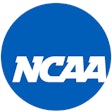
A U.S. Department of Education official has told ESPN that Title IX rules will apply to future revenue dollars that schools share with college athletes, but the department declined to offer a compliance roadmap.
According to reporters Paula Lavigne, Dan Murphy and Heather Dinich, the Education Department stopped short of providing guidance on how schools should distribute the money between men and women to comply with the broad language of the Title IX law.
"Schools must provide equal athletic opportunities based on sex, including with respect to benefits, opportunities, publicity and recruitment, and must not discriminate in the provision of financial aid," Catherine Lhamon, the assistant secretary for the department's Office for Civil Rights, said in a written statement to ESPN. "In the new NIL environment, these same principles apply."
In settling multiple antitrust lawsuits, the NCAA and its power conferences agreed in May to allow colleges to share up to $20 million in revenue per year with athletes starting in 2025. The details of the settlement, which still must be approved by a judge, will not address how schools should handle Title IX requirements, according to multiple sources involved with crafting the agreement, ESPN reported.
"The department did not answer a question about whether the revenue share dollars would be deemed financial aid, which would be required to be distributed to men and women athletes proportionally based on roster spots.," Lavigne and Murphy, who shared the ESPN byline, wrote. "To date, every dollar a school provides directly to its athletes has been intended to cover educational expenses and thus has been considered financial aid."
Among the options facing athletics administrators is paying a higher portion of revenue dollars to men, and thus risking potential lawsuits, or equally sharing revenue with men and women, risking falling behind competitors in football recruiting.
Education department officials previously old ESPN they have no timeline for adding clarity to the specific questions that schools are now trying to answer.
"As has been true all these decades, Title IX requires schools to ensure that when accepting and using private donations, the schools do not create disparities in benefits, opportunities, and treatment on the basis of sex that result in the denial of athletic opportunities," Lhamon wrote in her recent statement to ESPN. "Likewise, Title IX prohibits schools from providing significant assistance to any outside organization that discriminates on the basis of sex. These core Title IX principles operate unchanged today."
As reported by Lavigne and Murphy, Title IX requires schools to provide roster spots on varsity teams that roughly line up with the gender breakdown of their student enrollment, and provide financial aid that is proportionate to those roster spots. If 55 percent of a school's student body is female, then 55 percent of its varsity roster spots have to go to women's sports and 55 percent of its financial aid dollars need to go to women.
When it comes to revenue share dollars provided directly by the schools, athletic department officials have told ESPN they don't know whether they must give a proportionally equal amount of money to men and women or if equitable treatment means that they can allocate the roughly $20 million based on each athlete's value in the NIL market.
If schools decide to view the new revenue sharing money as financial aid akin to the scholarships or cost-of-living stipends they already provide to athletes, roughly half of that money will need to go to women athletes on most campuses. In that case, a football team would collectively receive, at most, $10 million in revenue share — or even less at schools that want to be competitive in basketball or other men's sports.
Some schools are exploring potential plans to spend 75% or more of the new $20 million revenue-sharing fund on football players, according to multiple athletic department officials. Those schools are using the last three years of NIL deals to show that football players receive 75% of the money in the current market for athletes, according to data collected by companies such as Opendorse and Basepath. This formula would lead to roughly $15 million flowing to a school's football team, which would likely lead to an increased income for some players.
All college athletes will have an opportunity to object to the settlement before it is finalized. However, their window to raise objections is expected to open later this year, and remain open only for 60 to 90 days. According to Lavigne and Muprhy, "It is unlikely that players will have a clear answer on how Title IX will be applied to their future revenue-sharing dollars by the time that window closes, considering the timing of how long it typically takes the education department to craft and vet new policy."
Records and interviews show the NCAA and its schools have not contacted the education department to give them direction. ESPN submitted a public records request to the department, asking for copies of any correspondence from the NCAA, the major conferences, or colleges regarding NIL from January 2023 through April 2024. The department said there were no responsive records. An education department spokesperson also said those parties have not contacted the department with questions about revenue-share dollars either.
"ESPN asked the 20 athletic departments with the most college athletes whether they had sought guidance from the Department of Education," Lavigne and Murphy wrote. "More than half those schools declined to provide an answer. Several said it was too early in the process of the antitrust settlement to make those efforts, and others said they were consulting with their lawyers and conference officials. One athletic department spokesman, who did not want to be identified, noted that they looked forward to getting guidance from education department officials because they should be the ones who take the lead."
In the absence of an answer from the education department or Congress, athletes and schools will likely have to wait for a lawsuit and a judge's ruling to create a legal standard for how to share their money.
"If any attorney is going to challenge the way a school distributes the new revenue-share dollars when that money starts to flow in 2025, a group of active college athletes would have to sue their school and allege that they should be receiving a bigger cut of the revenue share dollars distributed by the athletic department," wrote Lavigne and Muprhy. "The litigation process could take years before it is fully resolved in a way that sets a precedent for the rest of college sports."





































